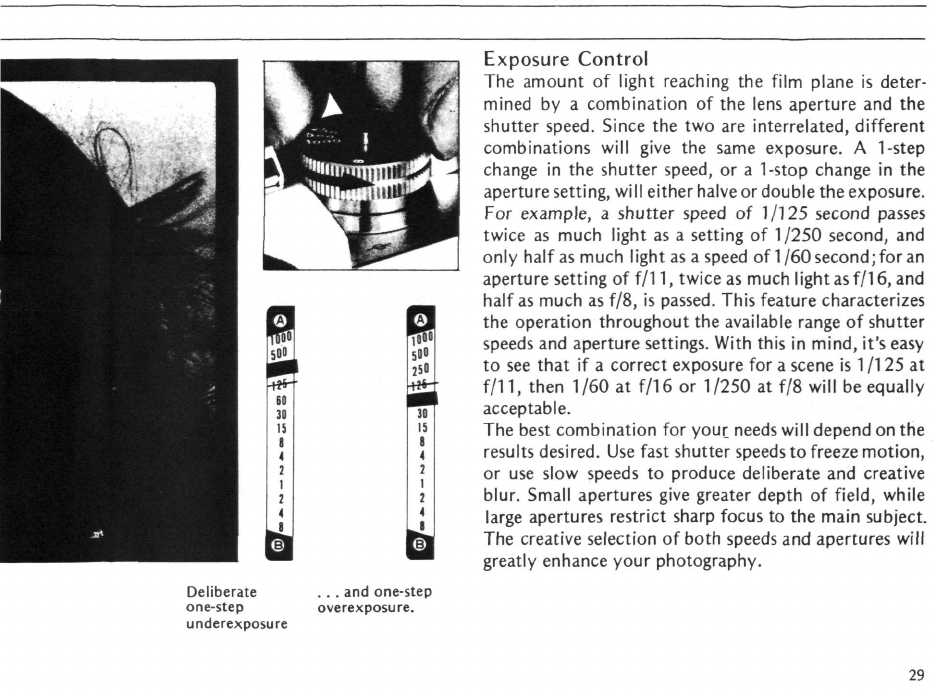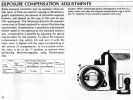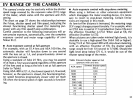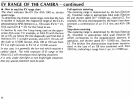
0 c
TIP
iP
500
60
D
5D0
250
30
15
I
<
2
I
2
<
I
Exposure Control
The amount of light reaching the film plane is deter-
mined by a combination of the lens aperture and the
shutter speed. Since the two are interrelated, different
combinations will give the same exposure. A
1-step
change in the shutter speed, or a
1-stop
change in the
aperture
setting,
will either halve or double the exposure.
For example, a shutter speed of 1/125 second passes
twice as much light as a setting of 1/250 second, and
only half as much light as a speed of 1/60
second;
for an
aperture setting of
f/11,
twice as much light
as
f/16, and
half
as
much as f/8, is passed. This feature characterizes
the operation throughout the available range of shutter
speeds and aperture settings. With this in mind, it's easy
to see that if a correct exposure for a scene is
1
/125 at
f/11,
then 1/60 at f/16 or 1/250 at f/8 will be equally
acceptable.
The best combination for your needs will depend on the
results desired. Use fast shutter speeds to freeze motion,
or use slow speeds to produce deliberate and creative
blur. Small apertures give greater depth of
field,
while
large apertures restrict sharp focus to the main subject.
The creative selection of both speeds and apertures will
greatly enhance your photography.
Deliberate . . . and one-step
one-step overexposure,
underexposure
29


















